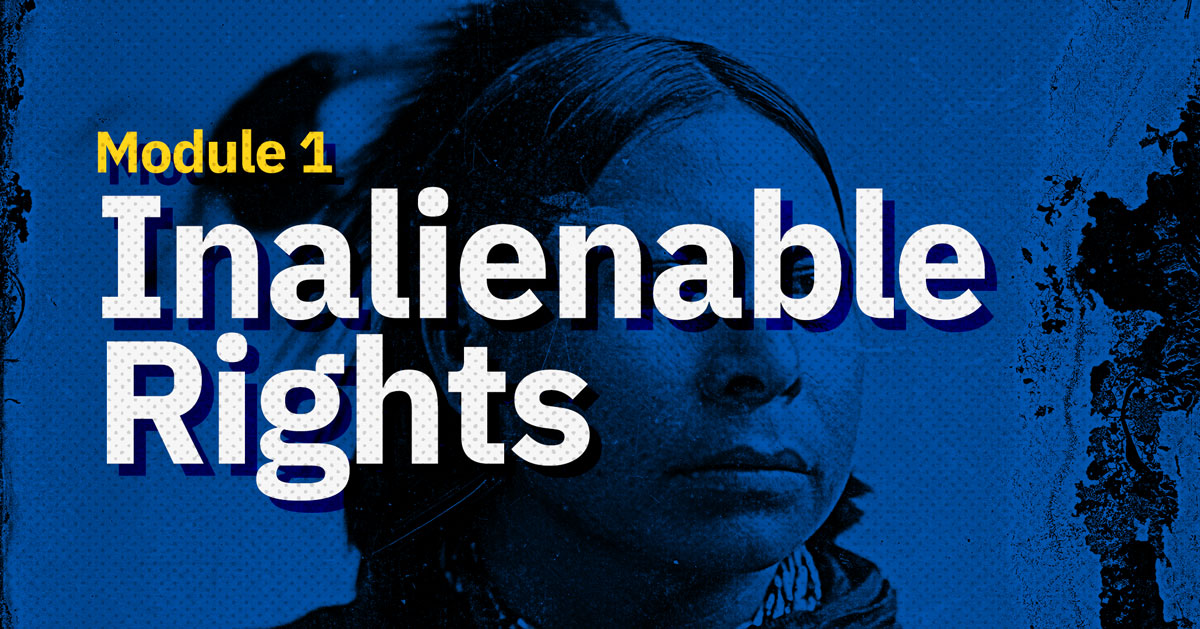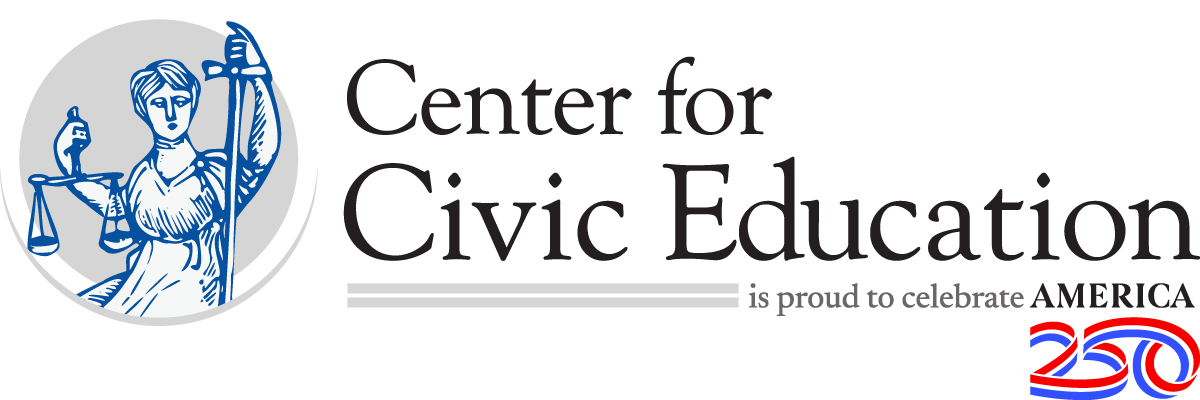
Module 1: Inalienable Rights
In this lesson, students will explore the inalienable rights of both rural and Indigenous communities. Students will examine if rights have been protected or denied to these groups. Indigenous communities in the United States have a varied and complex history in the United States. At different points throughout this history, these communities have been shaped by both recognition and denial of their inalienable rights.
Lesson Plan: Day 2
- Welcome students to social studies.
- In trio groups, have students answer the following questions using the Observe and Wonder graphic organizer:
- List the items you see.
- What do you think life might be like in this rural community based on this image?
- What makes you say that?
- How do you think living in a rural community might affect someone’s ability to access opportunities like education, jobs, and healthcare?
- What types of jobs or careers do you think people in this community are likely to have? Why?
- Ask a few groups to share their responses with the class.
- Reintroduce the compelling question: “Has the United States made good on its promises of life, liberty, and the pursuit of happiness for all?”
- Explain that the fulfillment of inalienable rights may impact individuals and communities in rural areas differently. For example, people in rural areas may heavily rely on farming jobs or working in agriculture to earn money. These jobs are very important to our country, but often come with low wages and long hours. They are also not as protected by the government as other jobs.
Universal Design for Learning (UDL)
- Provide guiding questions on screen or in a graphic organizer for students to refer to.
- Allow students to discuss in trio groups before sharing out to the whole class.
- Allow sufficient wait time for students to formulate an opinion.
Multilingual Learners (ML)
Social-Emotional Learning (SEL)
Civic Skills & Dispositions
Extending Learning
- Inform students that they will be analyzing a primary-source document in teams to investigate the promises of life, liberty, and property.
- Assign students individually or as pairs a vocabulary word from the vocabulary slide deck for Day 2 (slide 20) to sketch or define in their own words using sticky notes or index cards to build a quick “word wall.”
- Using your routine strategy for assigning groups, divide students into groups of four. Each group will be assigned to one paragraph of the act noted as Exhibit A, B, C, or D.
- Distribute the Fair Labor Standards Act of 1938 Annotation Station and as a class review the Annotation Station strategies to ensure students understand expectations:
- ❍ Circle words you do not know, and take a moment to find the definition.
- Highlight in YELLOW phrases that confuse you. Use context clues to figure out their meaning.
- Highlight in RED any references to rights of rural workers that have been violated.
- Highlight in GREEN any references to protections for workers.
- ✩ Star the phrase or line that you find most important.
- Explain to students that the Fair Labor Standards Act (FLSA) was passed in 1938 to set standards and to make sure workers were paid fairly and protected in the workplace.
- Instruct students to work collaboratively to read and annotate their assigned paragraph. Students will work as a team to restate the proclamation paragraph in their own words and be prepared to share it with the class.
- Circulate around the room, encouraging each group, observing progress, and redirecting as needed.
- Direct students to discuss their annotations with their section of the text.
- Provide sentence starters to support discussion:
- “I think this part of the act means …”
- “This phase supports the idea that …”
- “I am unsure about this part, but it might mean …”
- Provide sentence starters to support discussion:
- Guide groups to answer the three questions at the bottom of the Annotation Station document.
- What we think this primary source is saying …
- Does this act support or protect the inalienable rights of rural Americans?
- We think this act DOES or DOES NOT support inalienable rights of rural communities because …
- After all student groups have had a chance to learn about their assigned portion of the primary source reading, bring the class back together for a brief whole-group debrief. Students will share what their group learned, and opportunities for clarifying questions will be provided.
Universal Design for Learning (UDL)
- Provide simple text summaries for emerging readers.
Multilingual Learners (ML)
Social-Emotional Learning (SEL)
Civic Skills & Dispositions
Extending Learning
- Connect student findings to the compelling question and facilitate a class discussion by asking the students the following questions:
- What workers’ rights do you think were violated prior to this act?
- Why do you think it was necessary for FLSA to be enacted?
- How do low wages or unsafe working conditions impact someone’s life? Their liberty? Their pursuit of happiness?
- Do you think the FLSA goes far enough to protect the rights of rural workers? Why or why not?
- What recommendations would you add to the FLSA? Why?
- Based on your group’s finding, how does the act address the ideal of life, liberty, and the pursuit of happiness for rural communities?
- Tell students that while urban workers benefited from the protections of the FLSA, rural agricultural workers often did not receive the same rights, leading to significant differences in pay and living conditions, working hours, and working conditions.
- Thank students for participating in this civic conversation.
Universal Design for Learning (UDL)
- Allow students to share their responses verbally, in writing, or using a digital tool.
- Allow sufficient wait time for students to formulate answers.
Multilingual Learners (ML)
Social-Emotional Learning (SEL)
Civic Skills & Dispositions
Extending Learning
- Tell students that the FLSA has been updated and amended several times since it was passed in 1938. Some of these changes extended protections to more workers.
- Divide students into trio groups. Each group will get a set of cards with brief descriptions of amendments to the FLSA and real-world scenarios about agricultural workers.
- Distribute the FLSA Cards, which indicate amendments to the act.
- Students work together to match each amendment with a real world scenario.
- Have students share their group’s answers.
- An Answer Key has been provided.
- Facilitate a class discussion on the question, “Do you think the laws in place today are enough to support workers in rural areas or do you feel there are still areas that need improvement? Why or why not?”
Universal Design for Learning (UDL)
- Provide a visual for each amendment for better comprehension.
- Use color coded cards for easier organization.
- Allow students to write down or draw their connection when matching amendments to the scenarios.
Multilingual Learners (ML)
Social-Emotional Learning (SEL)
Civic Skills & Dispositions
Extending Learning
- Instruct students to complete the Exit Ticket.
- Provide the following sentence starters:
- “I think the United States has made good on its promise of life, liberty, and the pursuit of happiness to rural communities because …” OR
- “I think the United States has NOT made good on its promise of life, liberty, and the pursuit of happiness to rural communities because …”
Universal Design for Learning (UDL)
- Offer students the choice to record their responses to the Exit Ticket.
- Provide sufficient wait time after presenting the Exit Ticket so all students can process and respond.
Multilingual Learners (ML)
Social-Emotional Learning (SEL)
Civic Skills & Dispositions
Extending Learning






